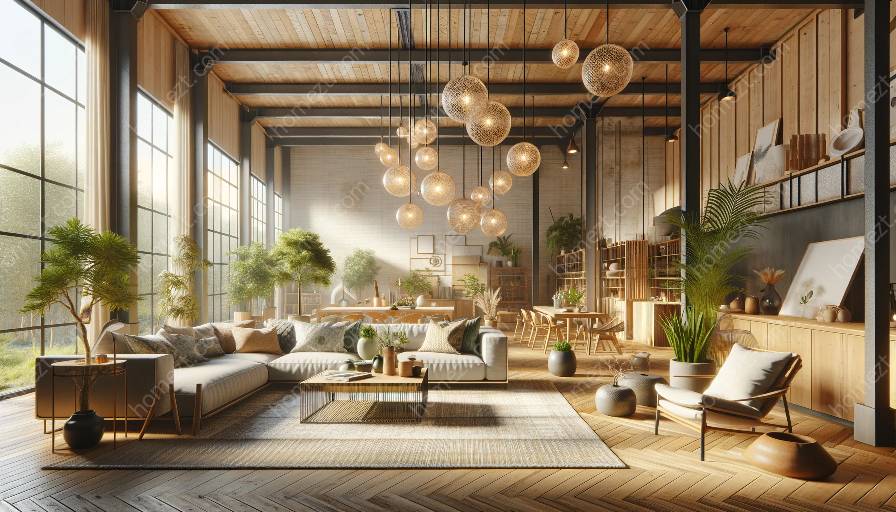Sustainable interior design in urban environments presents a unique set of challenges and opportunities. As the world's population increasingly gravitates towards urban areas, the need for sustainable and eco-friendly design practices becomes ever more crucial. In this comprehensive guide, we will explore considerations for incorporating sustainability into interior design in urban settings, discussing eco-friendly design principles, mindful material choices, energy efficiency, and the intersection with interior design and styling.
Eco-Friendly Design Principles
Eco-friendly design principles form the foundation of sustainable interior design in urban environments. Embracing these principles involves minimizing environmental impact while maximizing the health and well-being of the occupants. This can be achieved through various strategies, including:
- Utilizing renewable and non-toxic materials
- Implementing energy-efficient lighting and appliances
- Incorporating indoor plants for improved air quality
- Optimizing natural ventilation and daylighting to reduce reliance on artificial systems
By adhering to eco-friendly design principles, interior designers can contribute to creating healthier and more sustainable urban living spaces.
Mindful Material Choices
When it comes to sustainable interior design in urban environments, the selection of materials plays a pivotal role. Opting for environmentally friendly materials, such as reclaimed wood, bamboo, recycled glass, and low-VOC paints, can significantly reduce the environmental footprint of interior spaces. Additionally, repurposing existing materials and incorporating locally sourced materials can further enhance the sustainability of design projects.
Energy Efficiency
Energy efficiency is a crucial consideration in sustainable interior design for urban environments. With the rising demand for energy in urban areas, integrating energy-efficient solutions can lead to substantial reductions in energy consumption. This can be accomplished through the deployment of smart lighting systems, insulation improvements, and the use of energy-efficient appliances, thereby contributing to a more sustainable urban ecosystem.
Integration with Interior Design and Styling
The integration of sustainability into interior design and styling is essential for fostering a harmonious and eco-friendly built environment. This involves considering the aesthetic, functional, and experiential aspects of sustainable design while aligning with the client's preferences and lifestyle. By seamlessly blending sustainable elements with innovative design and styling techniques, interior designers can create visually appealing spaces that prioritize environmental responsibility.
Conclusion
As cities continue to expand and evolve, the importance of sustainable interior design in urban environments cannot be overstated. By embracing eco-friendly design principles, making mindful material choices, prioritizing energy efficiency, and integrating sustainability into interior design and styling, designers can contribute to the creation of urban spaces that are eco-conscious and aesthetically captivating. The considerations outlined in this guide serve as a roadmap for navigating the intersection of sustainability, eco-friendly design, and interior design in urban contexts, paving the way for a more sustainable and resilient urban future.


























